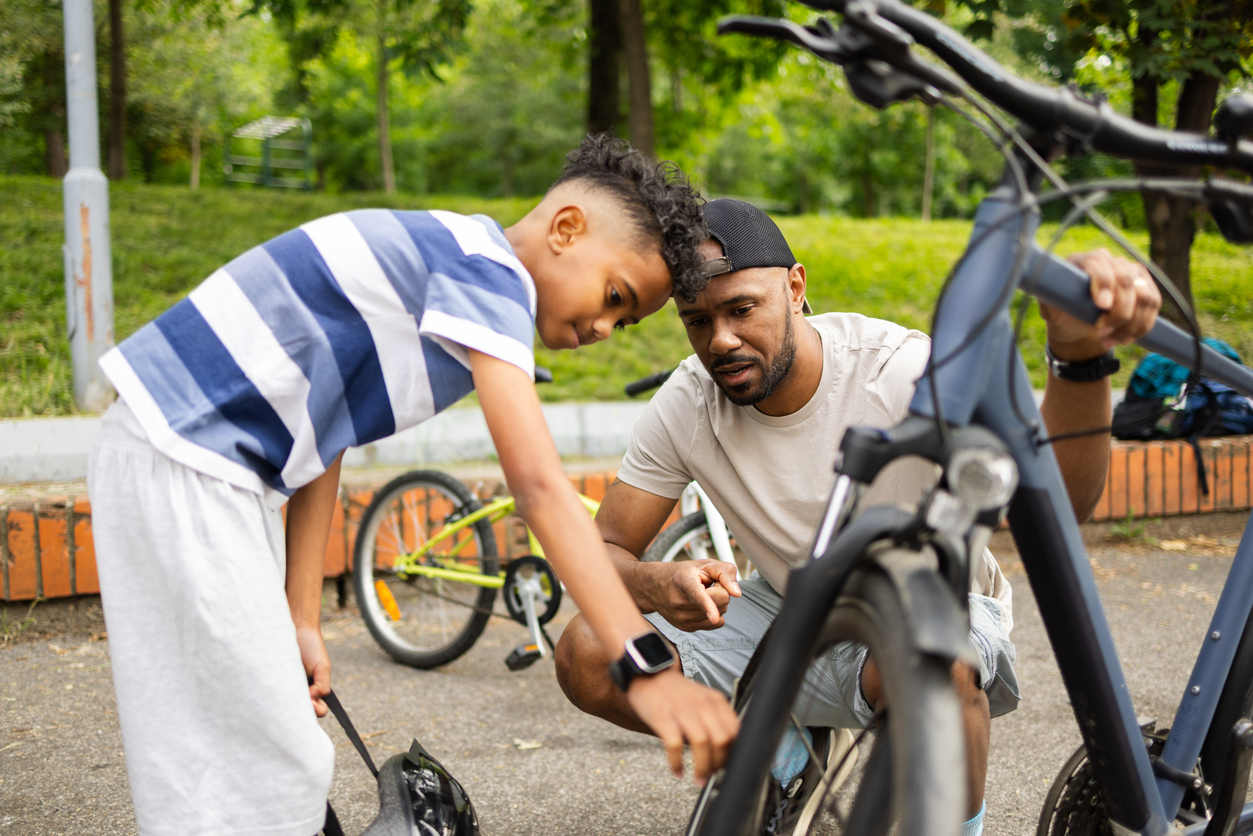Picture this: You’re in the middle of a heated custody battle, and the latest point of contention isn’t about school choice or holiday schedules—it’s about e-bikes. Yes, you read that right. These electric-powered two-wheelers are becoming the unexpected focal point of parental disagreements nationwide.
As e-bikes surge in popularity, they’re not just changing how families commute and explore—they’re reshaping the landscape of legal custody battles. Safety concerns clash with the desire for independence, while legal gray areas leave parents and courts scratching their heads. You might be wondering: How did a simple mode of transportation become such a complex issue? And more importantly, how does this affect your family?
This post dives into the electrifying world of e-bikes and custody disputes. We’ll explore why these vehicles are causing such a stir, examine the safety concerns that keep parents up at night, and navigate the murky legal waters surrounding their use. You’ll discover how e-bikes complicate custody agreements and learn strategies to balance your child’s freedom with your parental instinct to protect. Buckle up (or should we say, clip in?) as we pedal through this charged topic that’s sparking debates in homes and courtrooms alike.
The Rise of E-Bikes in Family Life
Convenience for family transportation
You’ve probably noticed more families zipping around town on e-bikes lately. It’s no wonder – these electric-powered bicycles offer unparalleled convenience for family transportation. You can easily tackle grocery runs, school drop-offs, and weekend outings without the hassle of parking or traffic jams. E-bikes allow you to cover longer distances with less effort, making them perfect for busy parents juggling multiple errands and activities.
Health benefits for parents and children
While e-bikes provide motor assistance, you’re still getting a great workout. You can adjust the pedal assist level to match your fitness goals, making it an excellent way for you and your children to stay active together. Regular e-bike rides can improve cardiovascular health, build strength, and boost overall well-being for the whole family.
Environmental impact and sustainability
By choosing an e-bike over a car for short trips, you’re significantly impacting the environment. You’ll reduce your carbon footprint and contribute to cleaner air in your community. It’s an excellent way to teach children about sustainability and environmental responsibility through everyday actions.
Cost-effectiveness compared to cars
The savings are substantial when you compare the costs of owning and operating an e-bike to a car. You’ll spend less on fuel, maintenance, and insurance. You won’t have to worry about parking fees or expensive repairs. For many families, e-bikes are becoming a cost-effective alternative or supplement to traditional vehicles, allowing you to allocate your budget to other critical family needs.
Safety Concerns Fueling Custody Disputes
Age restrictions for e-bike riders
As e-bikes gain popularity, parents are increasingly concerned about age restrictions for young riders. Most states have laws requiring e-bike riders to be at least 14 or 16 years old, depending on the class of e-bike. This creates a challenging situation for parents who want to introduce their children to e-biking but must navigate legal restrictions. Some custody agreements now include specific clauses about e-bike usage, considering the child’s age and maturity level.
Traffic rules and regulations
E-bikes blur the line between bicycles and motorized vehicles, leading to confusion about applicable traffic laws. You must be aware that e-bike riders often follow the same rules as traditional cyclists, including obeying traffic signals and riding in designated lanes. However, some areas have specific e-bike regulations, such as speed limits or restrictions on where they can be ridden. These varying rules can become a contention in custody disputes, especially if parents disagree on their child’s ability to navigate traffic safely.
Helmet laws and protective gear
Safety equipment is crucial for e-bike riding, particularly for children. Helmet laws for e-bikes often mirror those for traditional bicycles, but some jurisdictions have stricter requirements. Parents may disagree on the extent of protective gear needed, with one insisting on full body protection while the other believes a helmet is sufficient. This disagreement can escalate into a custody issue, especially if one parent feels the other is not prioritizing the child’s safety.
Parental supervision requirements
Another area of concern is the level of supervision required for children riding e-bikes. Some parents might argue for constant adult supervision, while others believe in fostering independence. This discrepancy can lead to custody disputes, particularly when determining visitation schedules or deciding which parent is better equipped to ensure the child’s safety using an e-bike. Courts may consider factors such as the neighborhood’s safety, the child’s maturity, and each parent’s ability to provide adequate supervision when making custody decisions related to e-bike use.
Legal Gray Areas Surrounding E-Bikes
Classification of e-bikes (bicycle vs. motorized vehicle)
The classification of e-bikes sits in a legal gray area, creating challenges for parents and courts alike. You’ll find that e-bikes often straddle the line between bicycles and motorized vehicles, making it difficult to determine which laws apply. In many jurisdictions, e-bikes are classified based on their top speed and motor wattage. This classification can significantly impact where you can ride them and who can operate them.
Varying state laws and regulations
As you navigate the e-bike landscape, you’ll encounter a patchwork of state laws and regulations. Some states treat e-bikes like traditional bicycles, while others classify them as mopeds or motorcycles. This inconsistency can lead to confusion when determining what’s legal for your child. You might find that an e-bike that’s perfectly acceptable in one state could be restricted in another, complicating custody arrangements that cross state lines.
Insurance and liability issues
Regarding e-bikes, you’ll need to consider insurance and liability concerns carefully. Many standard homeowners or auto insurance policies don’t explicitly cover e-bikes, potentially exposing you in case of accidents. You’ll want to check with your insurance provider to understand your coverage and consider additional policies if necessary. This becomes particularly important in custody situations, where both parents must ensure proper child protection.
Enforcement challenges
You’ll find that enforcing e-bike regulations can be challenging for law enforcement. The visual similarity between e-bikes and traditional bicycles makes it difficult for officers to identify which rules apply. This enforcement gap can lead to inconsistent application of laws, potentially affecting your custody arrangements. As a parent, you must stay informed about local enforcement practices to ensure your child’s safety and compliance with the law.
Custody Agreement Complications
Disagreements on e-bike usage
As e-bikes become increasingly popular, you may be at odds with your co-parent over whether your child should be allowed to ride one. These disagreements often stem from differing views on safety, maturity, and independence. You might believe that e-bikes offer an excellent way for your child to explore and gain confidence, while your ex-partner may see them as unnecessarily risky.
Differing parental risk assessments
You and your co-parent might have contrasting approaches to assessing the risks associated with e-bikes. This can lead to tension when making decisions about your child’s activities. You may feel comfortable with your child using an e-bike after proper training and with safety gear, while your ex might consider the risks too high regardless of precautions.
Impact on visitation schedules
E-bikes can significantly affect visitation schedules, especially if you live in an area where they’re a popular mode of transportation. You might find that your child’s ability to use an e-bike changes their mobility and independence during visits. This could lead to disagreements about pickup and drop-off times, or concerns about your child traveling between homes unsupervised.
Modifications to existing custody arrangements
As e-bikes introduce new challenges to co-parenting, you may need to consider modifying your existing custody arrangements. This could involve adding specific clauses about e-bike usage, safety requirements, or geographical boundaries. You might also need to address how e-bike-related decisions will be made and who has the final say in allowing or restricting their use.
Balancing Freedom and Protection
Age-appropriate e-bike access
When it comes to e-bikes and children, finding the right balance between freedom and protection is crucial. You should consider age-appropriate e-bike access for your children. Younger kids might start with low-powered e-bikes or pedal-assist bicycles, while older teens could handle more powerful models. Remember, your child’s maturity level and physical abilities are just as important as their age when making this decision.
Parental education and training programs
To ensure your child’s safety, you should educate yourself and your child about e-bike safety. Look for parental education and training programs in your area. These programs can teach you about e-bike mechanics, traffic rules, and safety gear. By participating in these programs, you’ll be better equipped to guide your child’s e-bike use and make informed decisions about their safety.
Compromise solutions for divided parents
If you and your co-parent disagree about e-bike use, seek compromise solutions. You might consider setting specific conditions for e-bike use, such as limiting rides to certain areas or times of day. Another option is to start with supervised rides and gradually increase independence as your child demonstrates responsibility. Open communication and flexibility are key to finding a middle ground that addresses both parents’ concerns.
Mediation and legal support options
When compromise seems impossible, you may need to explore mediation or legal support options. A neutral mediator can help you and your co-parent work through disagreements and find mutually acceptable solutions. If mediation fails, consulting with a family law attorney experienced in e-bike custody issues can guide your legal rights and options. Remember, the goal is to find a solution prioritizing your child’s safety and well-being while respecting both parents’ perspectives.
E-bikes have become more than just a mode of transportation; they’re now a significant point of contention in custody battles. As you navigate this new terrain, it’s crucial to understand the safety concerns, legal complexities, and custody agreement challenges that e-bikes present. Balancing your child’s freedom with their protection is no easy task, but it demands careful consideration.
Remember, your approach to e-bikes can significantly impact your custody arrangements. Stay informed about local laws, prioritize safety, and be willing to have open discussions with your co-parent. By doing so, you can work towards a solution that serves your child’s best interests while addressing the unique challenges that e-bikes bring to modern parenting and custody agreements.
Residents of Pacific Highlands Ranch turn to Lass Law for high-level representation in family law and divorce cases. From addressing spousal support and property division to resolving child custody through mediation, the firm works with professionalism and care. Whether your case is straightforward or high-stakes, Lass Law helps protect your interests every step of the way. Contact them today through the contact page.






